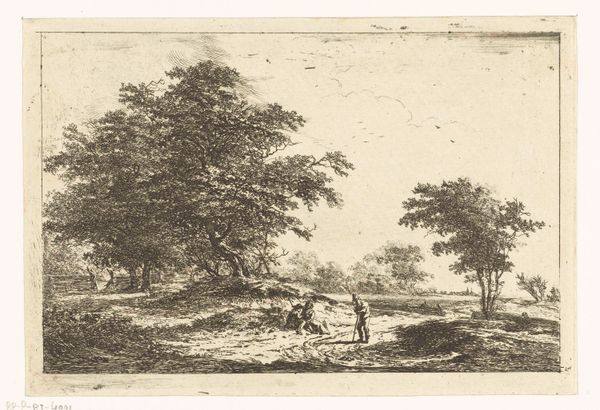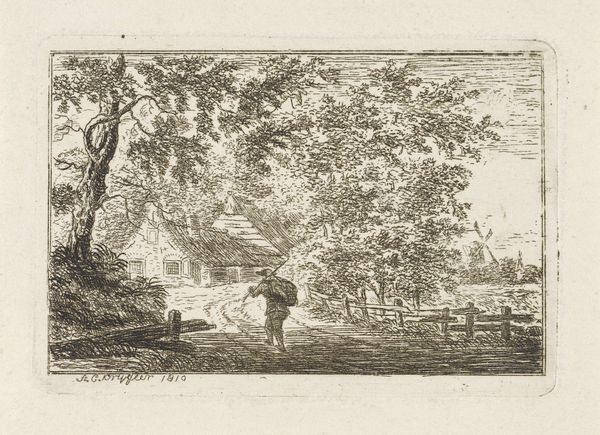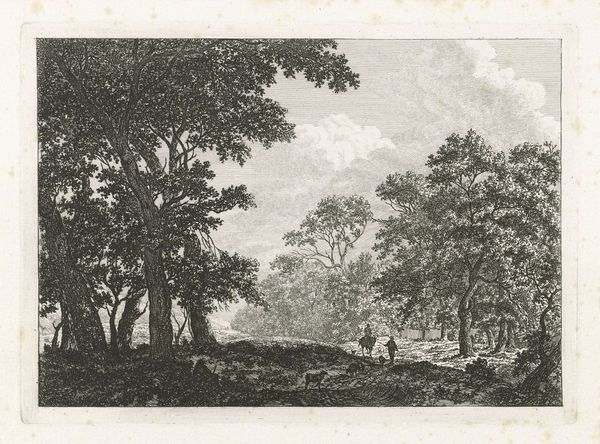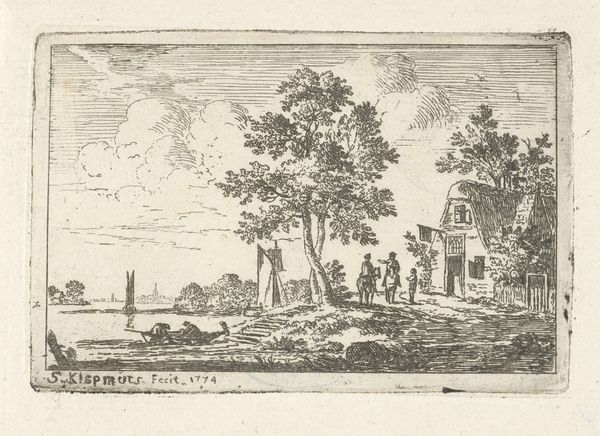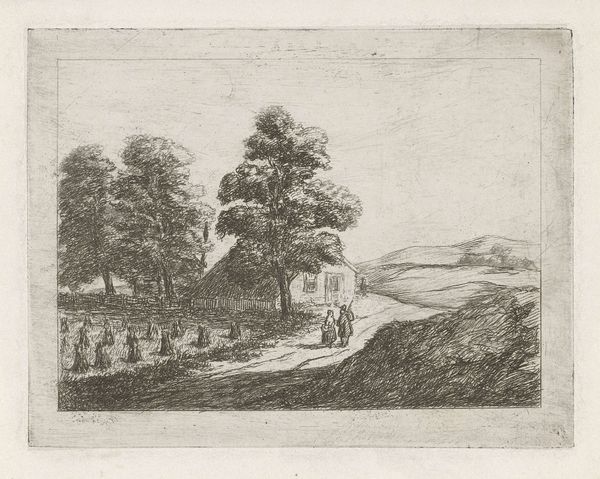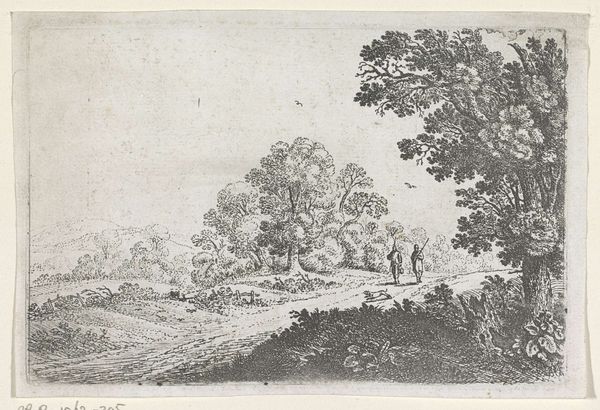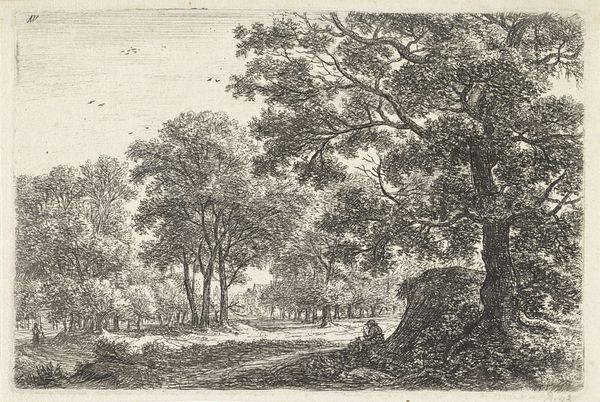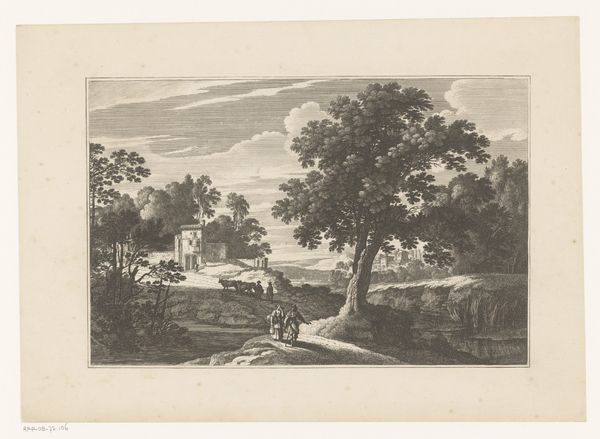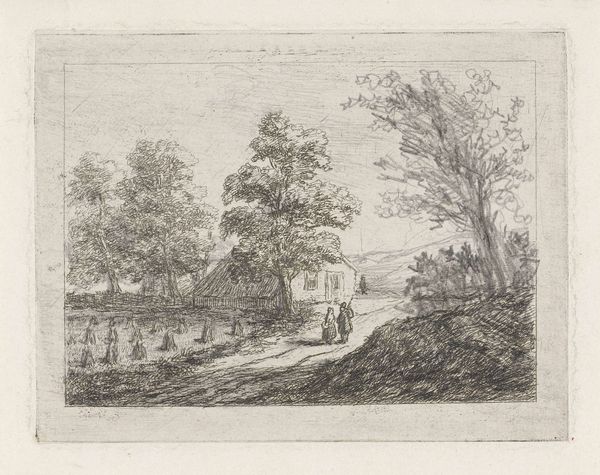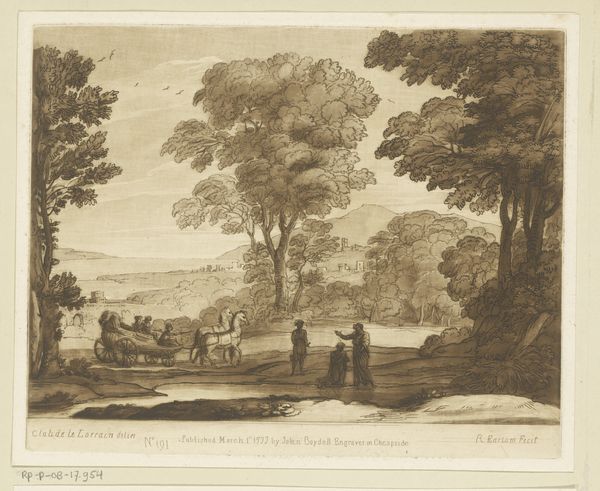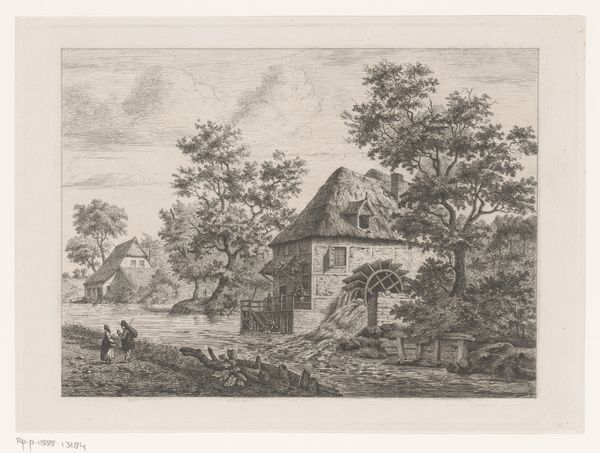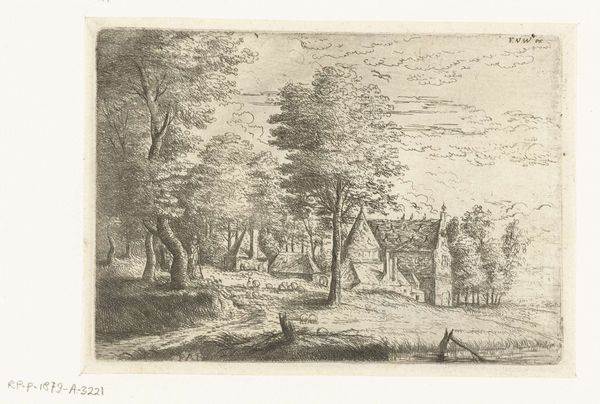
etching
#
dutch-golden-age
#
etching
#
old engraving style
#
landscape
#
etching
#
figuration
#
genre-painting
Dimensions: height 68 mm, width 88 mm
Copyright: Rijks Museum: Open Domain
Editor: This etching, "Landscape with a Swineherd," by Jacob Cats, dating back to 1768, presents such a serene rural scene. It's so detailed. What are your initial thoughts on this piece? Curator: Well, seeing as it's an etching, the labor and production involved are really brought to the fore. The acid-biting process onto the metal plate, the deliberate crafting and placement of each line - they all speak to the means of artistic production during that time. Editor: It's amazing how much detail Cats achieved with just lines. What about the scene itself, does it tell us something? Curator: Absolutely. The etching depicts rural labor, with a focus on animal husbandry, which provides valuable insights into the 18th-century Dutch agrarian society. It blurs the boundaries between high art and what would often be viewed as basic crafts. The making of art for consumption mirrors the production and consumption happening within the image itself, doesn't it? Editor: That's a good point, that the labor put into the piece and the work being represented. But isn’t this landscape also idealized in some way? Curator: Perhaps, but look at the materiality of the print itself. Etchings were relatively accessible. They could be reproduced and consumed on a wider scale than unique paintings. The image itself might present a simplified version of rural life, but the means of its production speak to broader social and economic structures. Editor: I hadn't really considered how the process of etching connects to the wider economic picture of the time. Thanks for the insight! Curator: My pleasure! Thinking about the art this way makes you consider who it was really for, and what message its material form carries.
Comments
No comments
Be the first to comment and join the conversation on the ultimate creative platform.
